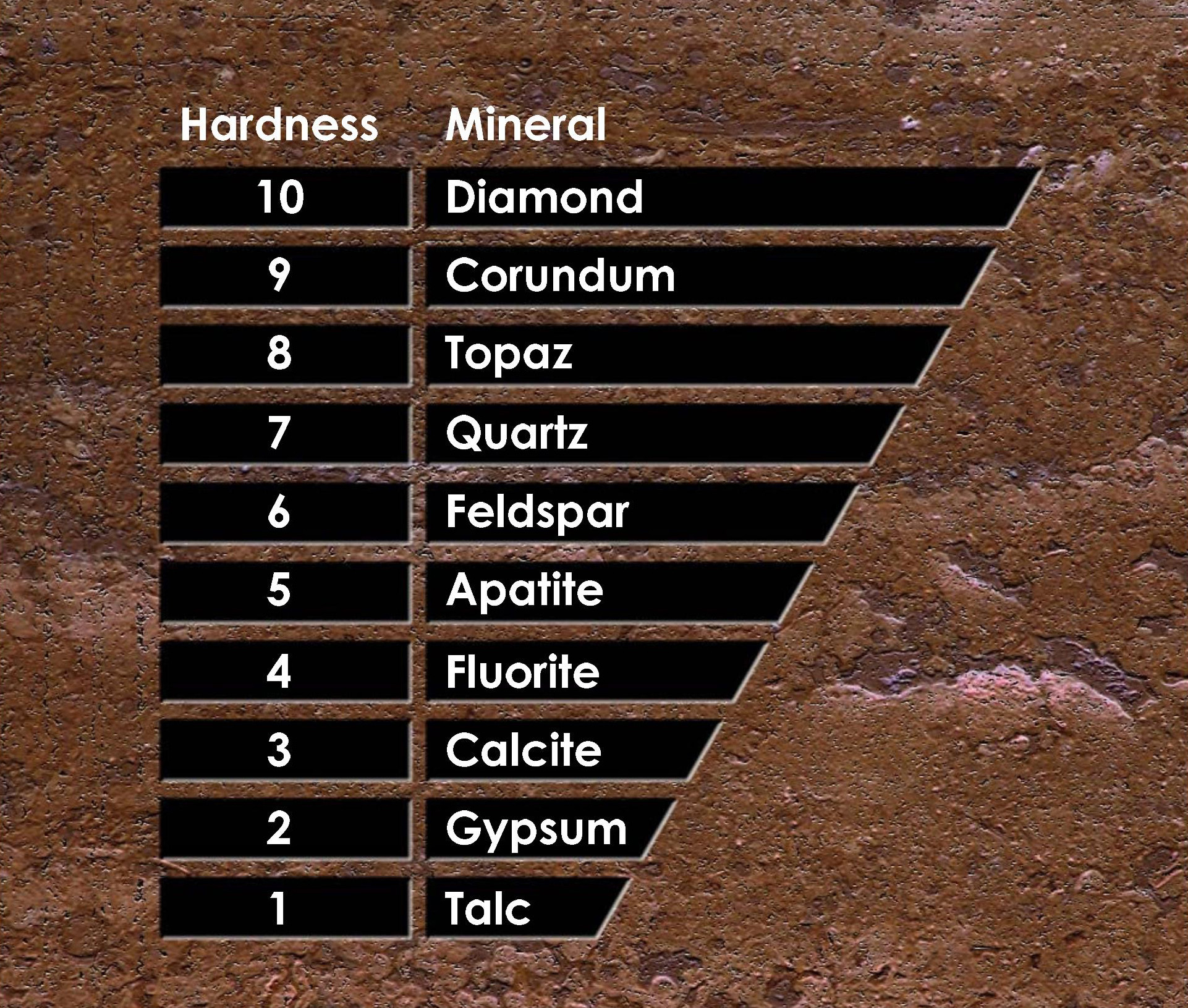| 0.2–0.3 |
caesium, rubidium |
| 0.5–0.6 |
lithium, sodium, potassium |
| 1 |
talc |
| 1.5 |
gallium, strontium, indium, tin, barium, thallium, lead, graphite, ice |
| 2 |
hexagonal boron nitride, calcium, selenium, cadmium, sulfur, tellurium, bismuth, gypsum |
| 2–2.5 |
halite (rock salt) |
| 2.5–3 |
gold, silver, aluminium, zinc, lanthanum, cerium, Jet (lignite) |
| 3 |
calcite, copper, arsenic, antimony, thorium, dentin |
| 3.5 |
platinum |
| 4 |
fluorite, iron, nickel |
| 4–4.5 |
steel |
| 5 |
apatite (tooth enamel), zirconium, palladium, obsidian (volcanic glass) |
| 5.5 |
beryllium, molybdenum, hafnium, glass, cobalt |
| 6 |
orthoclase, titanium, manganese, germanium, niobium, rhodium, uranium |
| 6–7 |
fused quartz, iron pyrite, silicon, ruthenium, iridium, tantalum, opal, peridot, tanzanite, jade |
| 7 |
osmium, quartz, rhenium, vanadium |
| 7.5–8 |
emerald, hardened steel, tungsten, spinel |
| 8 |
topaz, cubic zirconia |
| 8.5 |
chrysoberyl, chromium, silicon nitride, tantalum carbide |
| 9 |
corundum, tungsten carbide, titanium nitride |
| 9–9.5 |
silicon carbide (carborundum), titanium carbide |
| 9.5–10 |
boron, boron nitride, rhenium diboride (a-axis), stishovite, titanium diboride |
| 10 |
diamond, carbonado |
| >11 |
nanocrystalline diamond (hyperdiamond, ultrahard fullerite), rhenium diboride |

